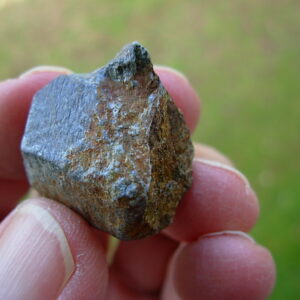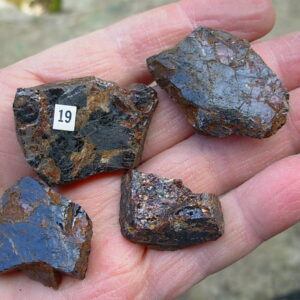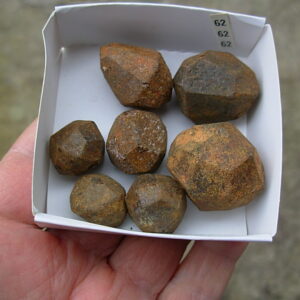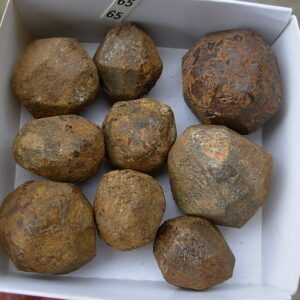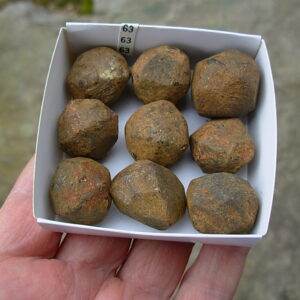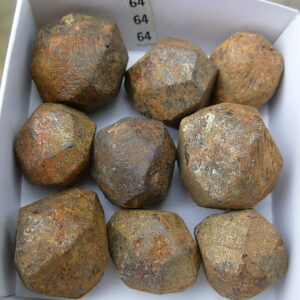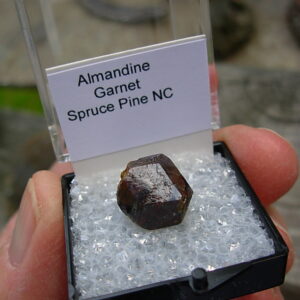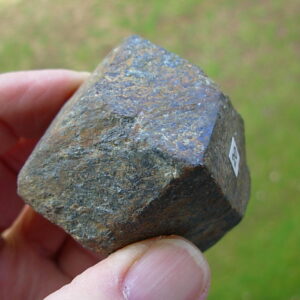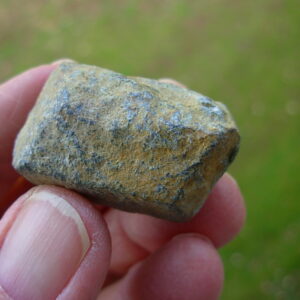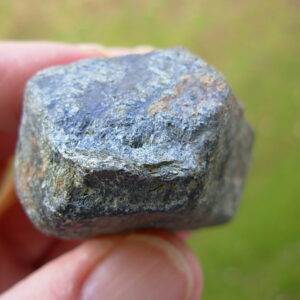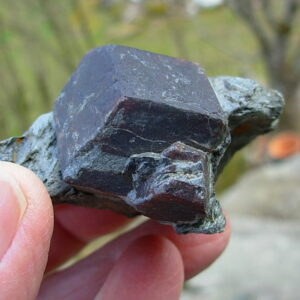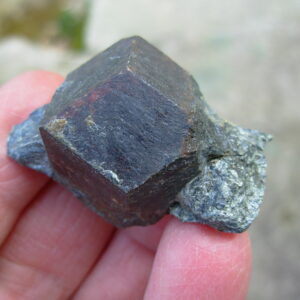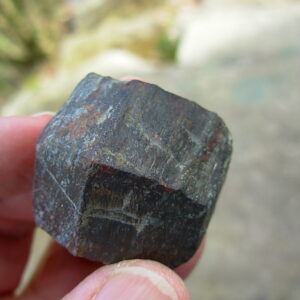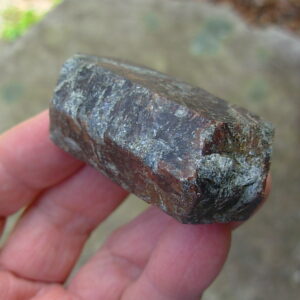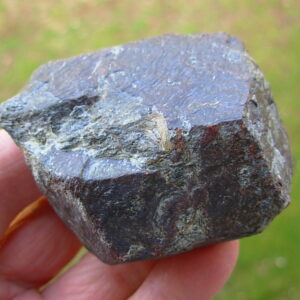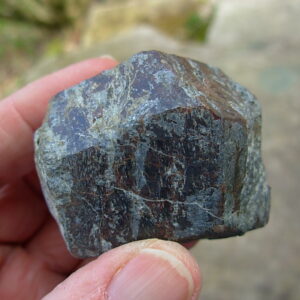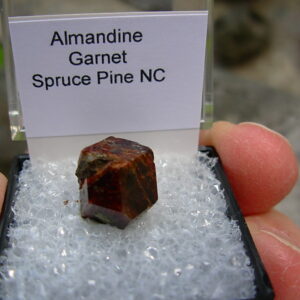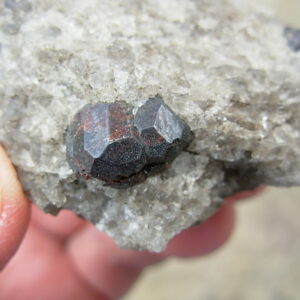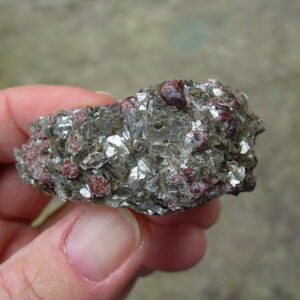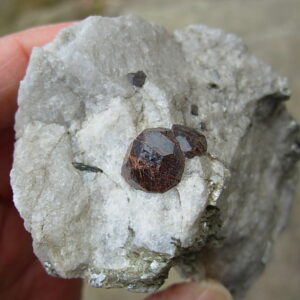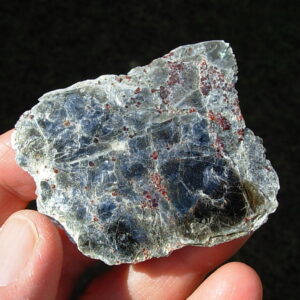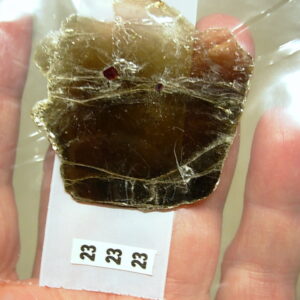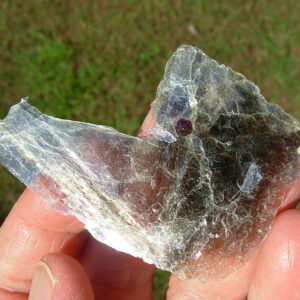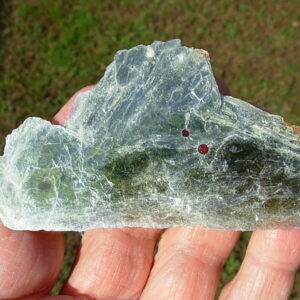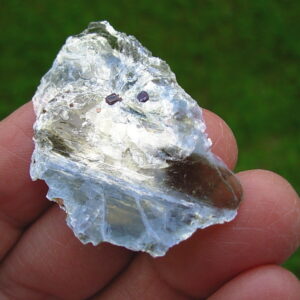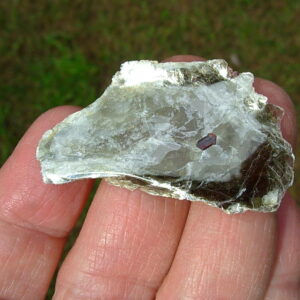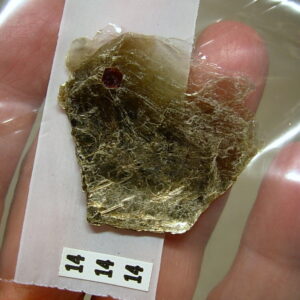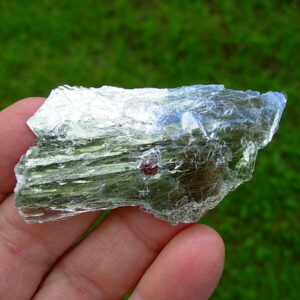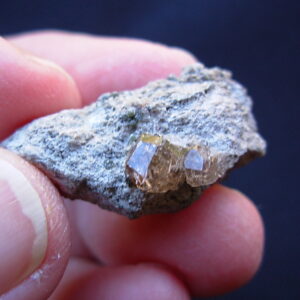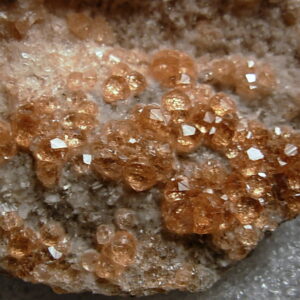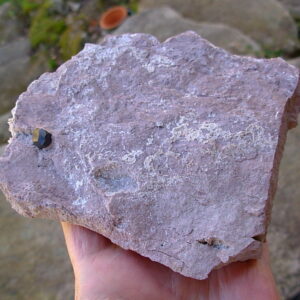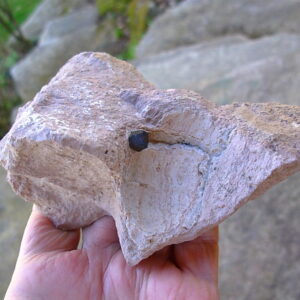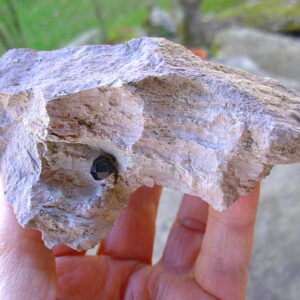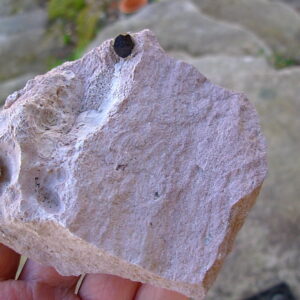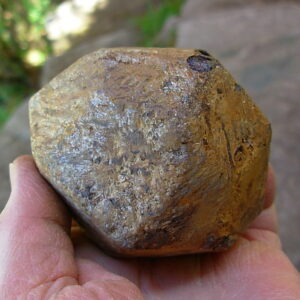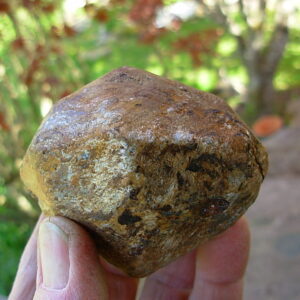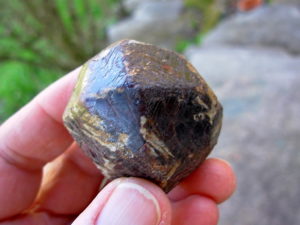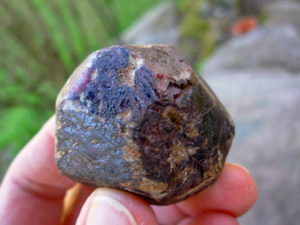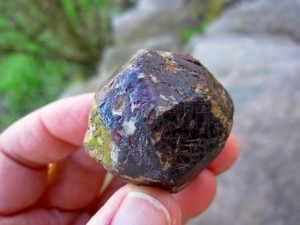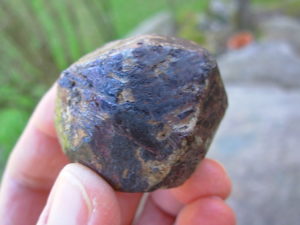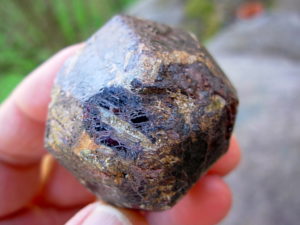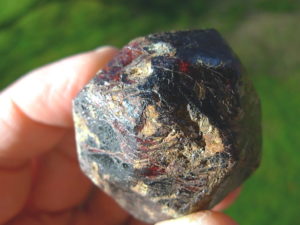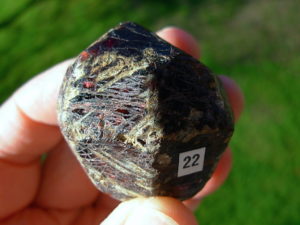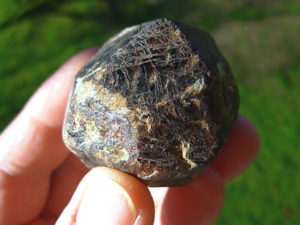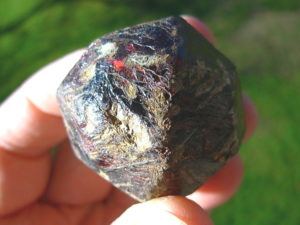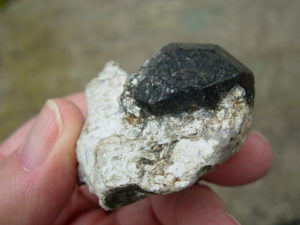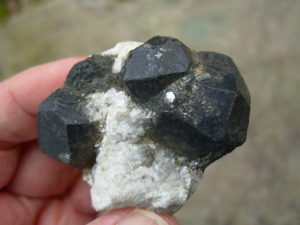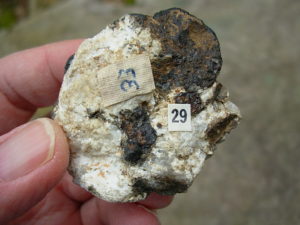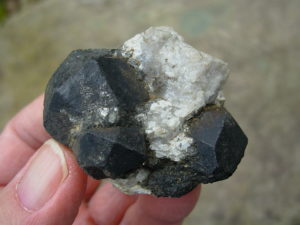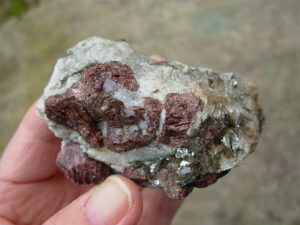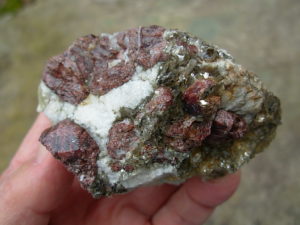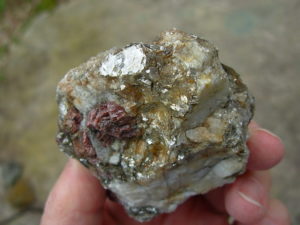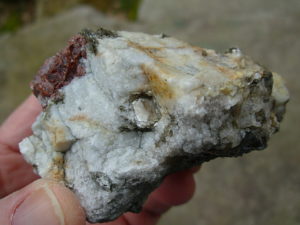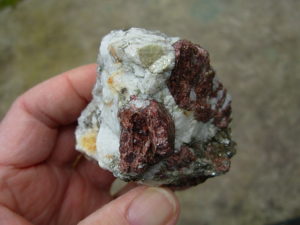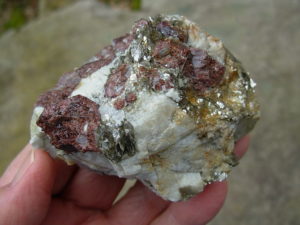Garnets
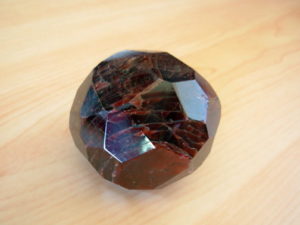 The Garnet Mineral Group Garnet is not a single mineral, but a group that contains closely related, isomorphous minerals that form a series with each other. The Garnet members form intermediary minerals between each member, and may even intergrow within a single crystal. The Garnets vary only slightly in physical properties, and some of the members may be so similar that they are indistinguishable from one another without x-ray analysis.
The Garnet Mineral Group Garnet is not a single mineral, but a group that contains closely related, isomorphous minerals that form a series with each other. The Garnet members form intermediary minerals between each member, and may even intergrow within a single crystal. The Garnets vary only slightly in physical properties, and some of the members may be so similar that they are indistinguishable from one another without x-ray analysis.
The common Garnets can be divided into two subgroups: Garnets containing aluminum (Al) as their second element. These include; Pyrope (Magnesium aluminum silicate) Almandine (Iron aluminum silicate) Spessartine (Manganese aluminum silicate)"Pyralspite"
Garnets containing calcium (Ca) as their first element. These include; Uvarovite (Calcium chromium silicate) Grossular (Calcium aluminum silicate) Andradite (Calcium iron silicate )"Ugrandite"
The members of each group freely intermingle among one another. For example, the magnesium in Pyrope may be partially replaced by some iron from Almandine or by some manganese from Spessartine. However, between the two groups of Garnets, it is much rarer for them to intermingle.
Garnets are shaped as well-formed, distinct, dodecahedral and trapezohedral crystals. Garnets are found as floaters, in matrix, in compact crystal groupings, grainy, massive, as rounded crystals, and as groups of small crystals.
Garnet Hill in Ely, Nevada
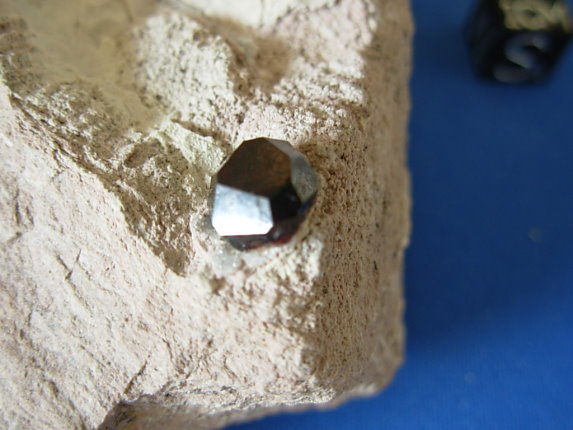
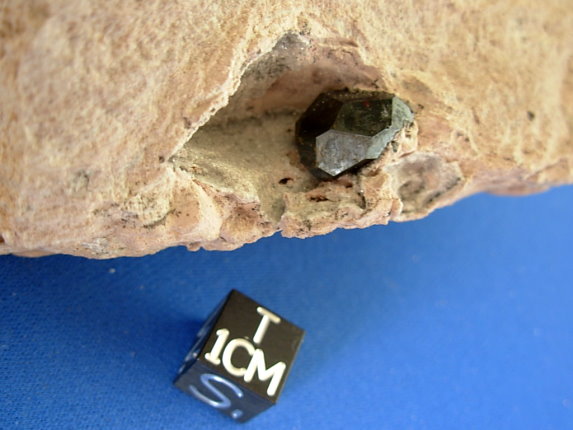
"The Garnet Hill rock hound recreation area in White Pine County is located about 4 miles Northwest of Central Ely in the Eagan mountain range. The major access road to this area joins US Highway 50 about 6.4 miles West of the traffic signal at US 395 and US 50 junction in Ely. The area is locally referred to as Garnet Hill and this nationally known rock hounding area is famous for its very dark colored garnets found in a flow banded rhyolitic volcanic rock. Most rock hounds search for garnets at this location in one of two different ways. The first method involves visually searching the surface and nearby drainages for the dark colored stones that have weathered from the pink to gray colored rhyolitic rock. Small garnets which have come loose from the host rock are spread here and there around the area and their very dark color contrasts strongly with the local rock and soil. Using this visual hunting method usually does find some stones, and the finds come with the least amount of work involved. The garnets collect in small gullies and drainage areas because they are heavier than the surrounding rock in a manner much like a placer gold deposit. The second method is used by other, more energetic rock hounds, who will work to break open the Garnet bearing rock with hammers and chisels. These tough workers seek to break open the hard rock and reveal any gems hidden within. This is a popular method and the best one for locating the finest specimens of Garnet, where the stones are still attached to the mother rock. If one seeks to use this method, it is necessary to bring sharp chisels and heavy crack hammers to break open the hard unweathered rhyolite stone. It is also very hard work.
The Garnet usually occurs as single crystals attached within small cavities known as vugs. The Garnet bearing vugs seem to occur in specific mineralized zones and areas, and these are confined to certain areas and not randomly dispersed and even manner through the rhyolitic rock. When searching for a zones which will contain the Garnet, perhaps the best clue is the presence of veins are cavities which are lined with sugary, sparkling light gray tridymite, a high temperature version of Quartz. Collectors have worked this spot for many decades, and broken waste material and rubble completely covers the ground in some areas, burying any potential Garnet bearing host rocks. Often, unless one works within the established pits, a considerable amount of work to move this rubble will be required.
The garnets are deposited in open cavities from the vapor phase, and are mixture of spessartine and almandine Garnet. The crystals exhibit sharp terminations and a sparkling luster. They are dark maroon red to black and average between one quarter to one half inch in size. On rare occasions they do occur in sizes up to nearly 1 inch these are extremely attractive, and make fine specimens. Normally only one Garnet Crystal occurs in each cavity, but there are exceptions when two or more garnets are present."
information courtesy of http://nevada-outback-gems.com/Rockhound/Nevada_garnet_Ely.htm
YouTube Video of Garnet hunting in Nevada
-
3pc set of Almandine Garnet Euhedral Crystals with minor Chlorite Mica Schist Matrix from Little Pine Mine
$24.00 Add to cart -
4 pc Split Almandine Garnet Crystal set for Lapidary Work from the Little Pine Mine
$20.00 Add to cart -
7 pc Old Stock Almandine Garnet Crystal Set from Morganton, NC
$72.00 Add to cart -
9 pc Old Stock Almandine Garnet Crystal Set from Morganton, NC
$82.00 Add to cart -
9 pc Old Stock Almandine Garnet Crystal Set from Morganton, NC
$83.00 Add to cart -
9 pc Old Stock Almandine Garnet Crystal Set from Morganton, NC
$84.00 Read more -
Almandine Garnet Thumbnail from Spruce Pine, NC
$13.00 Add to cart -
Almandine Garnet Crystal from the Creek Bed outside the Little Pine Mine
$26.00 Read more -
Almandine Garnet Crystal from the Creek Bed outside the Little Pine Mine
$10.00 Add to cart -
Almandine Garnet Crystal from the Creek Bed outside the Little Pine Mine
$20.00 Add to cart -
Almandine Garnet Crystal on Chlorite Mica Schist Matrix from Little Pine Mine
$49.00 Read more -
Almandine Garnet Crystal on Chlorite Mica Schist Matrix from Little Pine Mine
$45.00 Read more -
Almandine Garnet Euhedral Crystal with minor Chlorite Mica Schist Matrix from Little Pine Mine
$24.00 Add to cart -
Almandine Garnet Euhedral Crystal with minor Chlorite Mica Schist Matrix from Little Pine Mine
$30.00 Add to cart -
Almandine Garnet Euhedral Crystal with minor Chlorite Mica Schist Matrix from Little Pine Mine
$36.00 Read more -
Almandine Garnet Euhedral Crystal with minor Chlorite Mica Schist Matrix from Little Pine Mine
$32.00 Add to cart -
Almandine Garnet Thumbnail from Spruce Pine, NC
$12.00 Add to cart -
Almandine Garnets in Albite and Quartz
$32.00 Read more -
Almandine Garnets in Albite Quartz and Mica
$18.00 Read more -
Almandine Garnets in Albite Quartz and Mica
$15.00 Add to cart -
Almandine Garnets with mica in Feldspar and Quartz
$36.00 Add to cart -
Garnet in Muscovite from the Deer Park Mine in Mitchell County N.C.
$24.00 Read more -
Garnet in Muscovite from the Deer Park Mine in Mitchell County N.C.
$20.00 Add to cart -
Garnet in Muscovite from the Deer Park Mine in Mitchell County N.C.
$24.00 Add to cart -
Garnet in Muscovite from the Deer Park Mine in Mitchell County N.C.
$20.00 Add to cart -
Garnet in Muscovite from the Deer Park Mine in Mitchell County N.C.
$24.00 Add to cart -
Garnet in Muscovite from the Deer Park Mine in Mitchell County N.C.
$20.00 Add to cart -
Garnet in Muscovite from the Deer Park Mine in Mitchell County N.C.
$20.00 Add to cart -
Garnet in Muscovite from the Deer Park Mine in Mitchell County N.C.
$20.00 Add to cart -
Garnet in Muscovite from the Deer Park Mine in Mitchell County N.C.
$20.00 Add to cart -
Grossular Garnets on matrix from Jefferson Mine Asbestos Canada
$49.00 Add to cart -
Grossular Garnets on matrix from Jefferson Mine in Asbestos Canada
$149.00 Add to cart -
LG Spessartite Garnet Crystal on Rhyolite Matrix from Garnet Hill in Ely, Nevada
$43.00 Add to cart -
LG Spessartite Garnet Crystal on Rhyolite Matrix from Garnet Hill in Ely, Nevada
$46.00 Add to cart -
LG Spessartite Garnet Crystal on Rhyolite Matrix from Garnet Hill in Ely, Nevada
$46.00 Add to cart -
LG Spessartite Garnet Crystal on Rhyolite Matrix from Garnet Hill in Ely, Nevada
$45.00 Add to cart -
Old Stock Almandine Garnet Crystal from Morganton, NC
$72.00 Add to cart -
Old Stock Almandine Garnet Crystal from Morganton, NC
$59.00 Add to cart
Thackaringa District Garnets New South Wales, Australia
Thackaringa District, Yancowinna Co., New South Wales, Australia An area 30km west of Broken Hill in western New South Wales, encompassing the south-western end of the main Barrier Range - the Thackaringa Hills - and the pastoral stations of "Thackaringa", "Mount George" and "Stirling Vale". The district is most famous for containing several large pegmatites that were selectively mined for feldspar and beryl - the best known being the Triple Chance Mine. The northern part of the district is cut by a large retrograde shear zone containing large garnets and minerals for fire resistance use such as mica. The western edge of the Thackaringa Hills has the first site of mining in the Broken Hill silver fields with the Pioneer Mine. This, along with many other small silver lead mines, occurs over a 10km north-south strike where numerous quartz veins contain silver and lead mineralization. There are many other small mineral deposits found in the Thackaringa district where quartz veins and/or granitic rocks have crystallized including the Thackaringa davidite belt and pods of large rutile crystals. The total area is approximately 50sq. km
Ireland's Garnet Mine, Thackaringa District, Yancowinna Co., New South Wales, Australia
Located about 30 kilometers west-southwest of Broken Hill, 1 kilometer south of the Barrier Highway and 2.4 kilometers from the intersection of the Barrier Highway and the Triple Chance access road.
There was a small pit 10 meters wide by 20 meters long and 5 meters deep with euhedral almandine garnets up to 15cm across found embedded in chlorite schist. The pit was first opened up by Alan Ireland in the 1960's and many good specimens were obtained including very large matrix pieces, over the next 40 years. The lease was passed onto his daughter when Alan died in the 1980's. In 2010, Alan's daughter sold the mining lease to Tom Kapitany of Crystal World (Melbourne) who has, after retrieving more quality specimens, pushed the dump material back into and covering the original pit. Along with the large well-formed garnets, small sharp octahedral magnetite crystals up to 6mm are found within the chlorite schist.
Item# 22GARNSW03208212
Rare LG Almandine Garnet Crystal from Irelands Garnet Mine NSW Australia
$95.00

This is a superb Almandine Garnet from the Ireland's Garnet Mine,Thackaringa District, Yancowinna Co., New South Wales, Australia. The garnet has high luster faces and is a large Dodecahedron (12 sides) that appears to be a very gemmy material. In sunlight it appears as a brilliant red colored translucent specimen. There is contact damage on this piece (see photos) This is a unique and beautiful garnet that we were lucky to find. This piece is from a 1960's collection we procured.
It weighs 4.6 oz or 0.29 lb (132g) and measures 1.73 x 1.7 x 1.37 inches (44 x 43 x 35 mm)
Spruce Pine Mining District Blue Ridge Mountains, N.C.
Almandine Garnet crystals and Muscovite are found in a quartz matrix in the Spruce Pine District of North Carolina. The Spruce Pine Mining district is a 25-mile-long swath of mineral-rich real estate in the Blue Ridge Mountains located in Northwestern North Carolina. It is about 25 miles long and 5 miles wide and is in Mitchell, Yancey, and Avery counties. There is some extraction damage to all these pieces (see photos) as the host rock does not easily give up the specimens and the garnets are completely covered in matrix. The mountains here are famous for their emeralds, amethysts, sapphires, garnets, kaolin, quartz, mica, and feldspar. The countryside is dotted with gemstone mines, rock shops and jewelry shops.
Item# 29GARSP03202101
Black Almandine Garnets in Muscovite Albite Quartz Pegmatite from the Bear Creek District

This is a very old specimen of black almandine garnet crystals in muscovite-albite-quartz pegmatite from the Bear Creek District, Mitchell County, North Carolina. Large well formed garnet with an intergrown smaller one. This specimen has normal extraction damage, nice cabinet specimen from a1940's estate collection.
It weighs 3 oz or 0.19lb (86g) and measures roughly 2 x 1.7 x 1.3 inches (5.2 x 4.5 x 3.2 cm) the largest Garnet Crystal measures about 27.3mm
Item# 31GARSP03202150
Almandine Garnets in Albite Quartz and Mica
$18.00

This is a specimen of Almandine Garnets in a white matrix of albite, quartz and silver mica from the Spruce Pine Mining District. This specimen was collected after a dynamite blast broke up the country rock surrounding these garnets. We procured this specimen at the 2016 Grassy Creek show in Spruce Pine, N.C. Most of the garnets have been damaged, but this is a true representation of the garnet removal from an active garnet mine using garnets for abrasive production. It still is a very colorful and flashy display piece.
It weighs 8.5 oz or 0.53lb (241g) and measures roughly 3.1 x 2.3 x 2 inches (8 x 6 x 5.2 cm)

